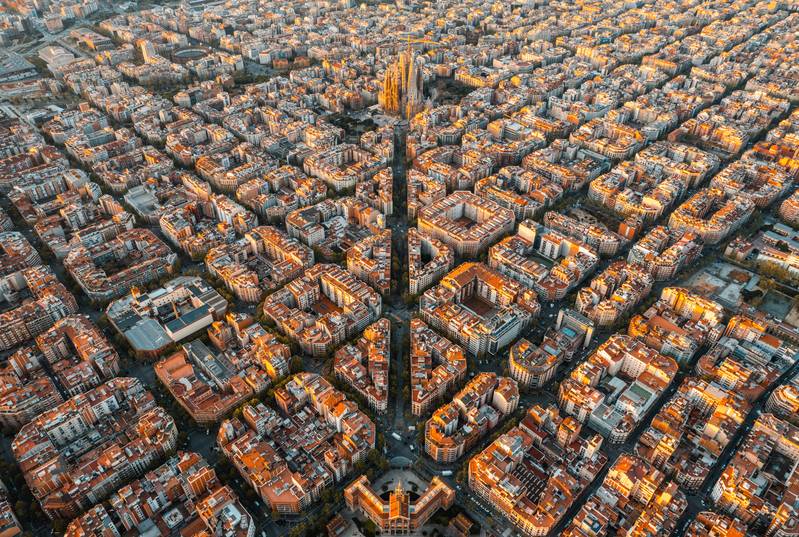
Barcelona is not a city you simply visit—it’s a place you absorb, experience, and remember through its architecture. From the medieval layout of its oldest neighborhoods to the flowing curves of Catalan modernism, the city has turned architecture into a visual language of its own, admired worldwide.
This article invites you to explore Barcelona’s architectural identity through its most iconic buildings, influential styles, and visionary architects. You’ll also discover how Gaudí’s legacy isn’t just something to observe—it’s something you can bring into your daily life through decorative art pieces. A way of taking home a piece of the city—through design, craftsmanship, and symbol.
Barcelona: A City of Architecture and Creativity
What makes Barcelona’s architecture truly fascinating is its seamless blend of contrasting styles. Old coexists with new. Tradition speaks to innovation. This balance has transformed the city into a living urban lab, where architects from around the world come to be inspired.
Beyond its visual appeal, Barcelona’s architecture carries deep symbolic value. It reflects the relationship between the city and its people. Natural materials, organic forms, and spaces designed to be lived—not just looked at—all express a vision of a human, open, and connected city. Many brands and designers also draw inspiration from this spirit, translating its values into products that resonate with the art, design, and lifestyle of Barcelona.
From Gaudí: Architectural Styles That Define Barcelona
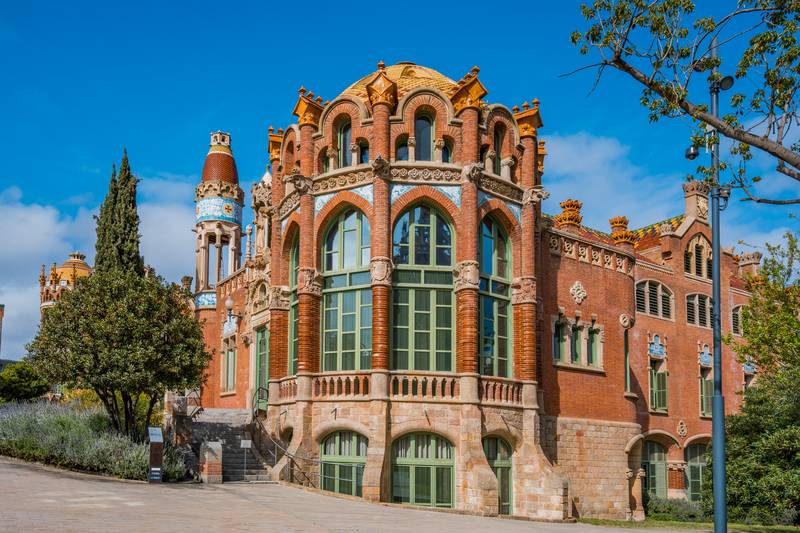
Architecture in Barcelona is a journey through time. Few cities in the world showcase such a natural coexistence of medieval buildings, modernist palaces, and cutting-edge structures. Gaudí’s houses define the city’s artistic soul, while contemporary skyscrapers are shaping a bold and ever-evolving urban skyline.
But Gaudí wasn’t alone. Architects like Lluís Domènech i Montaner and Josep Puig i Cadafalch also helped shape a monumental Barcelona. Landmarks such as Palau Güell, the Hospital de Sant Pau, and Casa Amatller represent a golden age in which every building was conceived as a symbolic, structural, and emotional masterpiece.
To speak of architecture in Barcelona is to highlight its constant dialogue between tradition and innovation. This fusion continues today, as new voices, forms, and materials join the city’s evolving landscape—all while honoring the cultural roots that made Barcelona a global reference for architectural creativity.
In recognition of this legacy and vision, UNESCO and the UIA have named Barcelona the World Capital of Architecture for 2026, a title that underscores the city’s ongoing commitment to sustainable urbanism and architectural excellence.
Gaudí and Catalan Modernism
Antoni Gaudí was a revolutionary architect who transformed the city and the way people experience its buildings. Deeply inspired by nature and spirituality, his work brought to Barcelona a universe of organic shapes, rich textures, and colors that tell stories. One of his signature techniques, trencadís—a mosaic made from broken ceramic pieces—has become an inseparable part of the city’s visual identity.
Historic buildings such as Casa Batlló, Casa Milà (La Pedrera), Casa Vicens, and Park Güell stand as masterpieces of Catalan modernism, a movement that blended architecture, decorative arts, and design into a unified aesthetic. Every façade, balcony, and dome is filled with religious, mythological, and natural symbolism.
Beyond its artistic value, Gaudí’s architecture has had a lasting impact on contemporary design and Catalan craftsmanship. His legacy lives on in countless products that reinterpret his unique visual language for modern contexts—without losing their authenticity or soul.
The New Barcelona: Sustainable and Contemporary Architecture
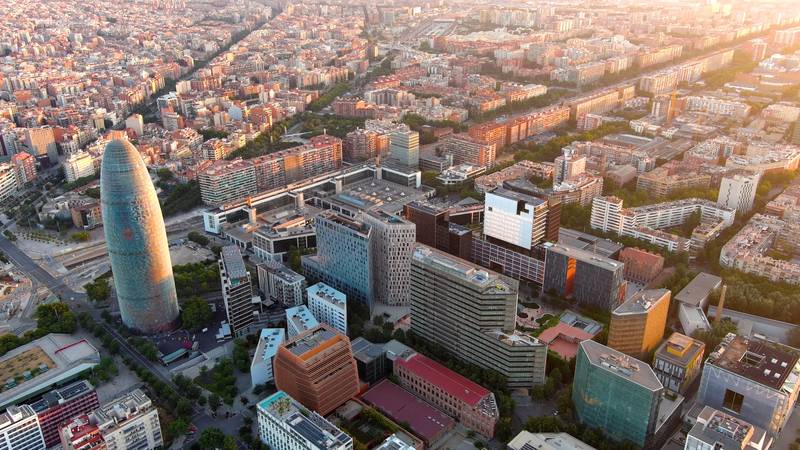
Just as modernism defines the glorious architectural past of Barcelona, today’s contemporary and sustainable architecture is shaping its future. In recent decades, the city has embraced urban transformation through values such as innovation, energy efficiency, and environmental responsibility. A clear example is found in the Illa de Glòries, where a public competition to design new social housing buildings required every proposal to include a strong environmental and energy strategy.
The 22@ District, a former industrial zone turned tech hub, is home to some of the city’s most innovative buildings: Torre Glòries, Media-TIC, the Design Museum (DHUB), and Torre Mare Nostrum are just a few examples of how Barcelona has fully embraced the 21st century while maintaining its unique identity. At the same time, cultural institutions like Museu Blau and CaixaForum show how ecological thinking and cultural programming can coexist in new public spaces.
Thanks to this momentum, Barcelona has become a European benchmark for responsible urban design. Integrated green spaces, recyclable materials, and bioclimatic structures have become part of its new architectural language. This vision has been brought to life by internationally acclaimed architects like Enric Miralles, Benedetta Tagliabue, and Ricardo Bofill, who have helped Barcelona evolve without losing its Mediterranean essence.
Iconic Architecture in Barcelona: Buildings That Speak for Themselves
Barcelona wouldn’t be the same without its buildings. Many of them act as silent storytellers, reflecting the city’s history, art, and transformation. Their presence defines the urban landscape, infusing it with character and a unique identity. From the flowing façades of Passeig de Gràcia to hidden modernist gems in L’Eixample, the city is full of famous houses and beautiful buildings that express its soul.
Each building carries its own style, author, and message—yet all of them contribute to a cohesive urban aesthetic. While many have become internationally known landmarks, they remain a source of inspiration for architects, designers, and brands seeking to connect with Barcelona’s creative spirit.
Barcelona’s Most Emblematic Houses
A stroll down Passeig de Gràcia is like a journey through Barcelona’s architectural essence. It’s here that you’ll find some of the most iconic examples of Catalan modernism, including:
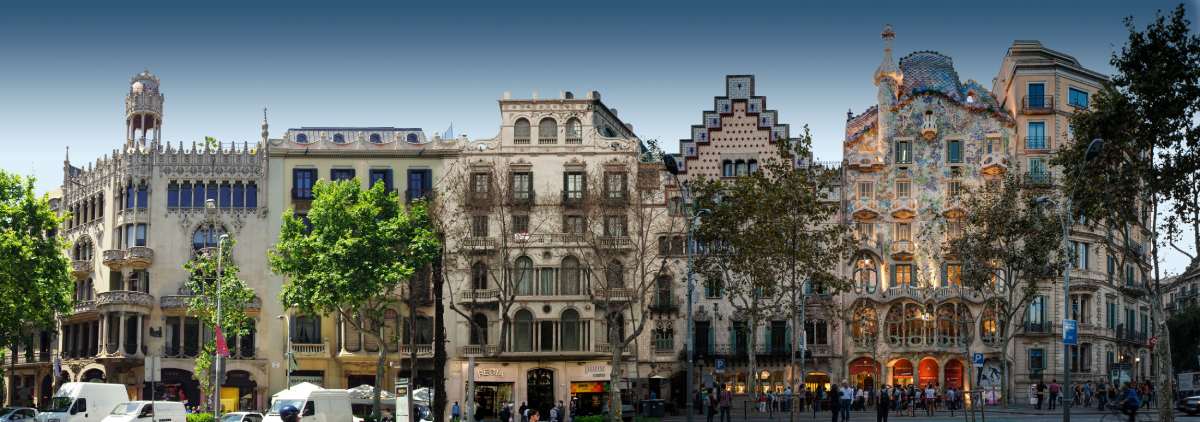
| Casa Lleó Morera | Casa Mulleras | Casa Bonet | Casa Amatller | Casa Batlló |
|---|---|---|---|---|
| Lluís Domènech i Montaner | Enric Sagnier | Marceliano Coquillat | Josep Puig i Cadafalch | Antoni Gaudí |
| A true gem of decorative modernism | An elegant example of neoclassical style | A subtle balance of contrasts | Gothic and Flemish-inspired | The ultimate expression of Gaudí’s creativity |
These three stand side by side on the “Illa de la Discòrdia” (Block of Discord), a stretch of the avenue that highlights three of the most influential visions of modernist architecture in Barcelona.
Beyond this famous corner, other lesser-known gems across L’Eixample deserve greater recognition, such as:
| Casa Terradas (de les Punxes) | Casa Macaya | Casa Sayrach |
| Josep Puig i Cadafalch | Manuel Sayrach i Carreras | |
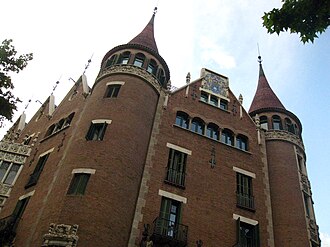 |
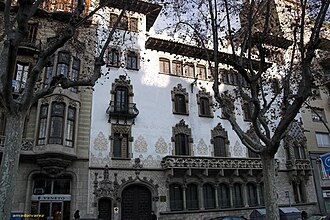 |
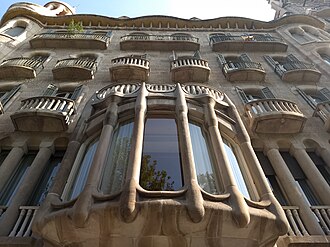 |
| A blend of medieval and modernist inspiration. | A refined neo-Gothic style, rich in sculptural details. | Sensual, organic modernism, defined by flowing curves. |
Trencadís Within Reach: Barcino and the Essence of Barcelona
Architecture in Barcelona is not just to be admired—it can also be transformed into decorative art. Barcino Designs bridges monumental architecture and contemporary design, reinterpreting the city’s visual language through handcrafted figures inspired by Gaudí.
Using traditional trencadís mosaic techniques, organic shapes, and vibrant colors, Barcino turns modernist aesthetics into decorative sculptures. These pieces celebrate Gaudí’s legacy, making it accessible to new audiences through a modern format.
Each Barcino figure is a small work of art, handcrafted in Barcelona, and represents the spirit of the city in iconic shapes: cats, salamanders, bulls… all finished in colorful trencadís mosaic.
The process is entirely artisanal, driven by a clear mission: to capture the visual magic of spaces like Park Güell, Casa Batlló, and Sagrada Família, transforming them into meaningful objects to share, gift, or showcase.
Partner with Barcino: Design from Barcelona for Businesses
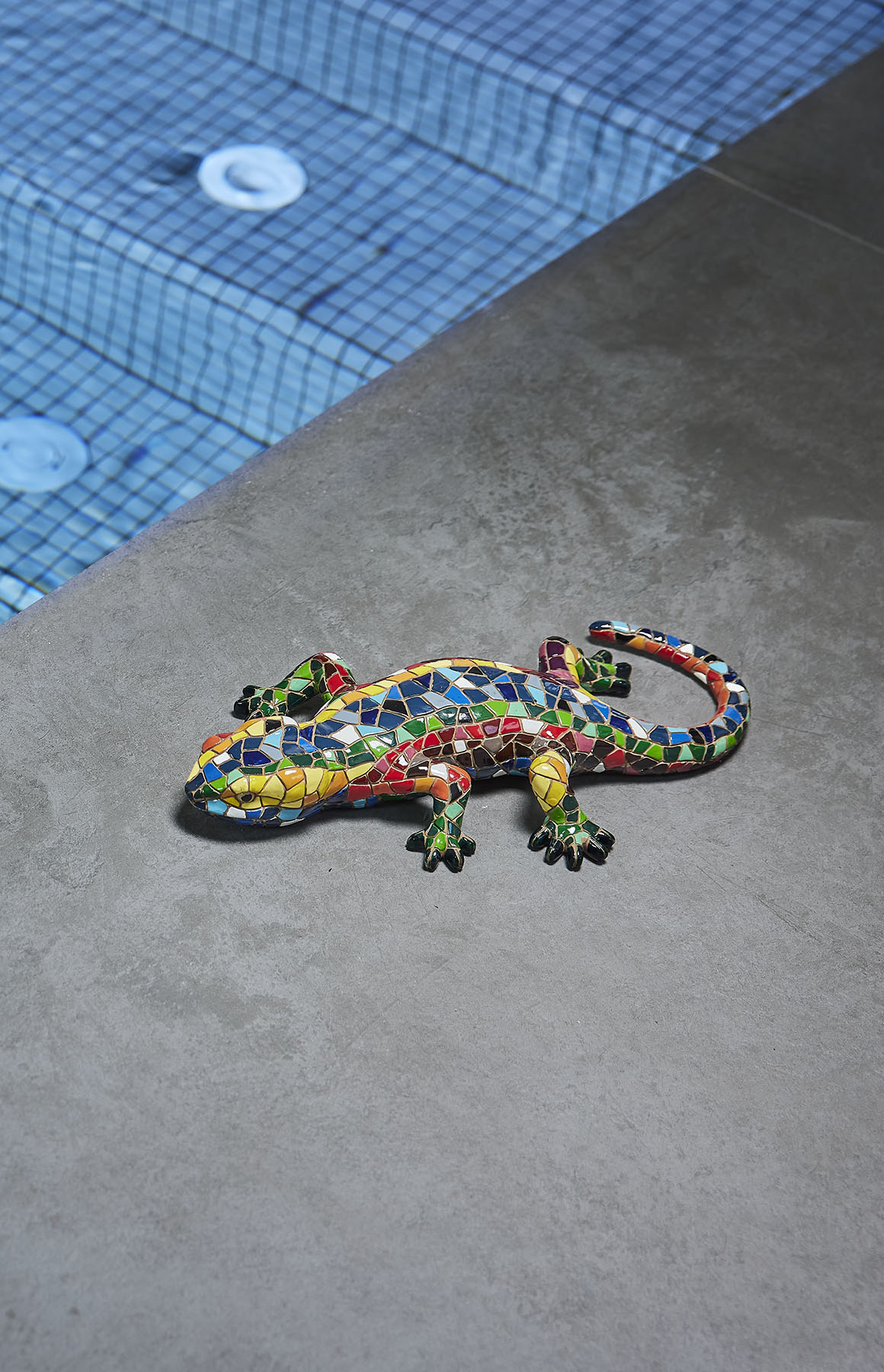
Barcino’s collections are tailored for retailers, cultural institutions, concept stores, design events, and hotels that value authenticity and design. Whether as decorative items, corporate gifts, or cultural merchandise, these handcrafted figures bring Barcelona’s artistic heritage into today’s spaces.
Collaborating with Barcino means working with a brand that embodies the art, craftsmanship, and identity of Barcelona at its best. We offer B2B solutions for companies that want to integrate meaningful products with strong cultural value and design excellence.
👉 Explore our business collections at barcinodesigns.com

